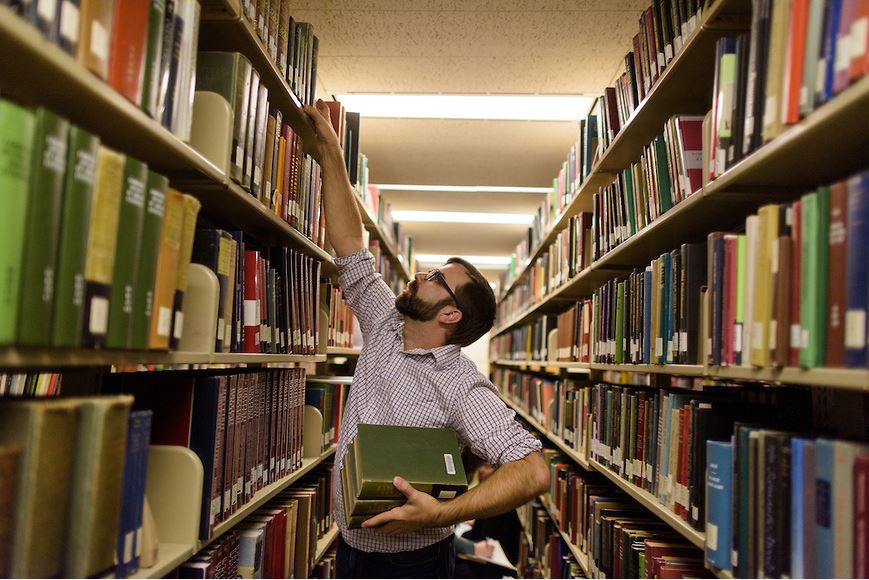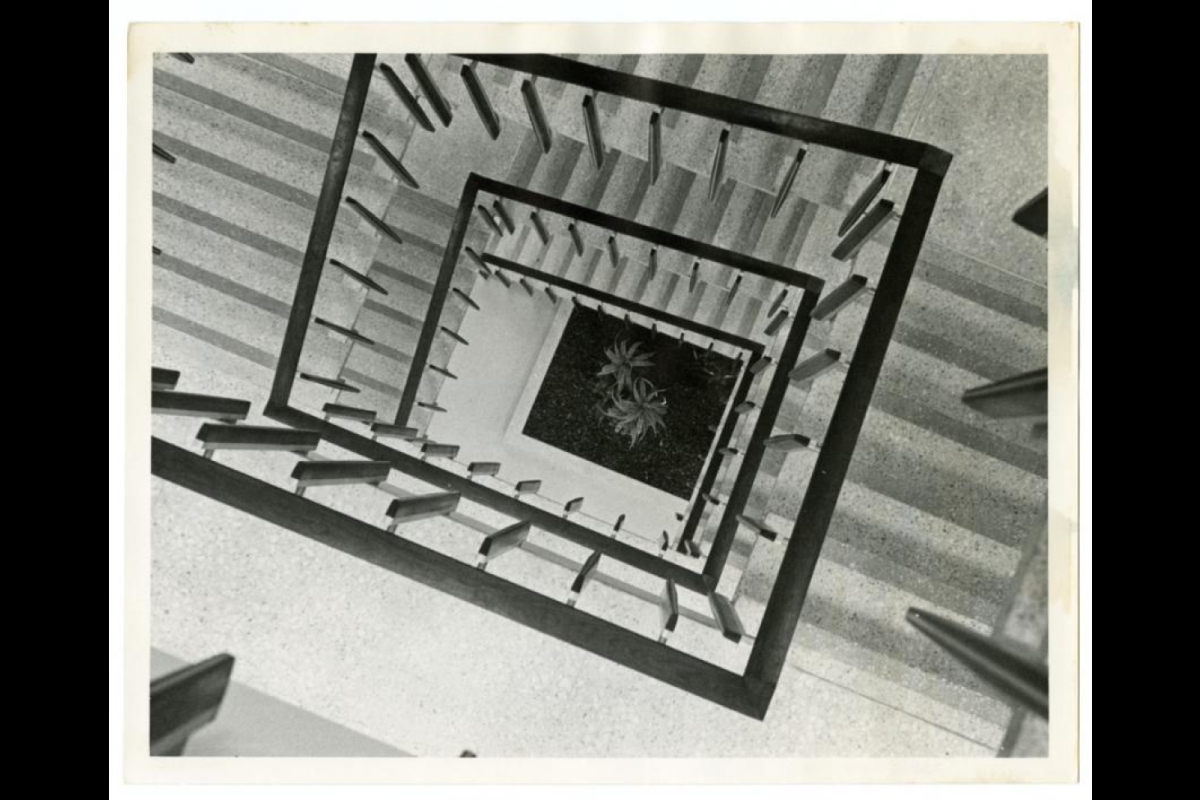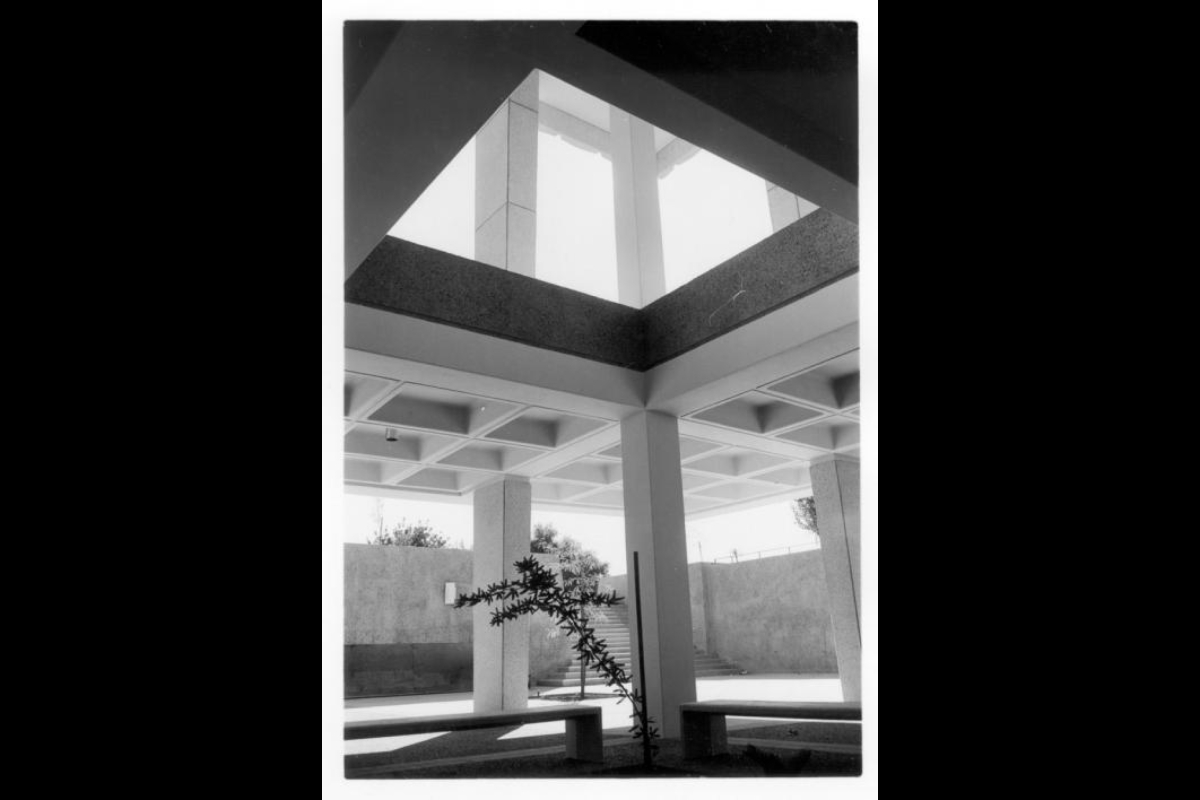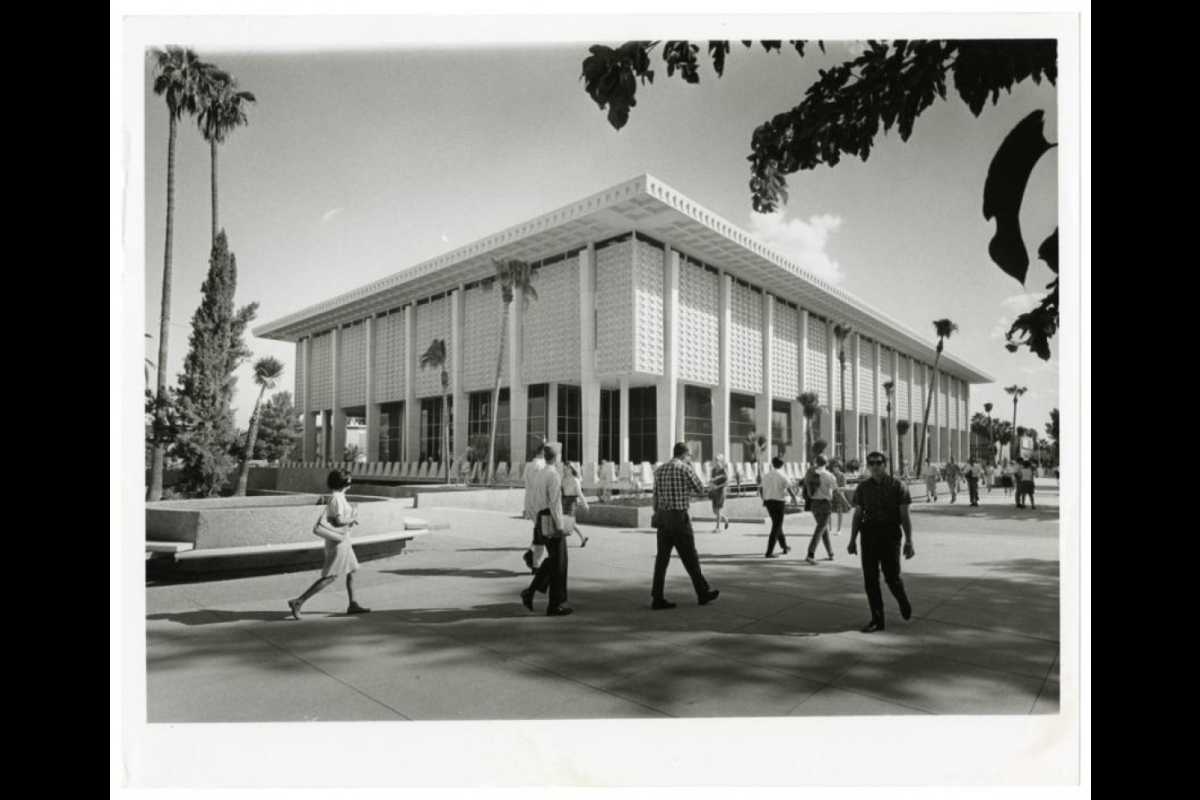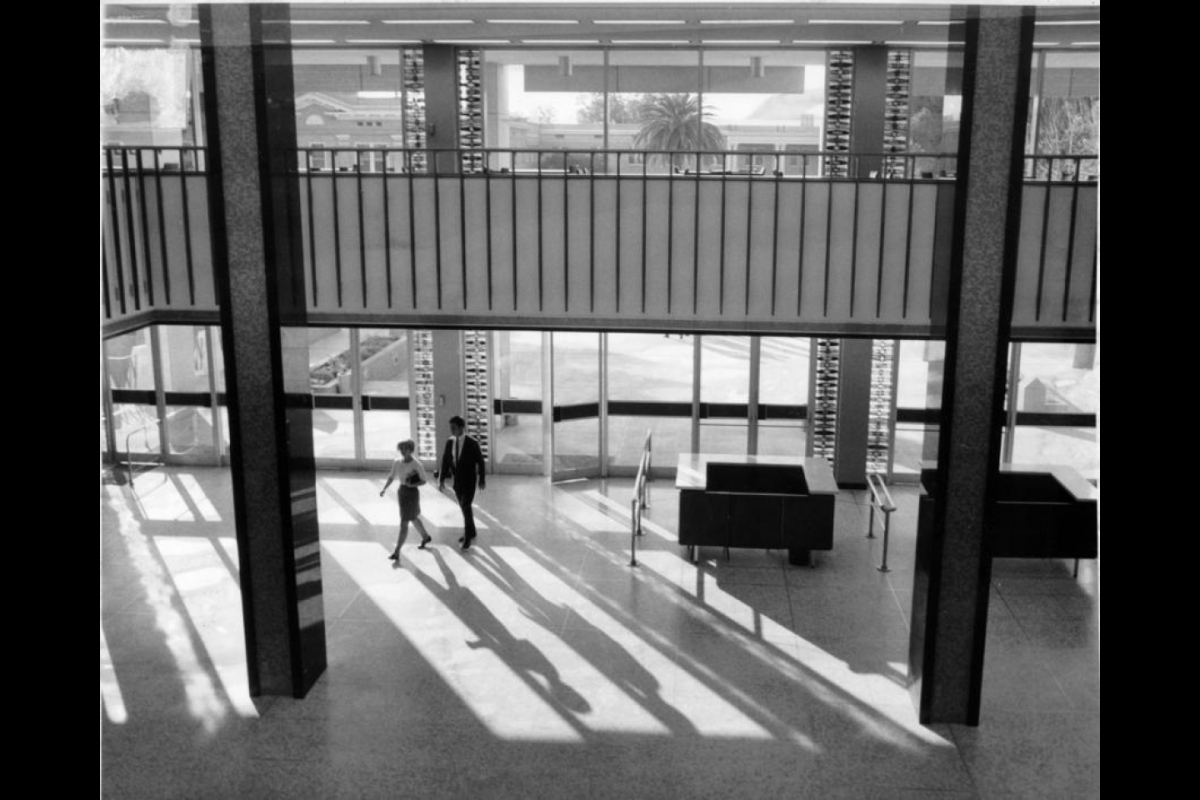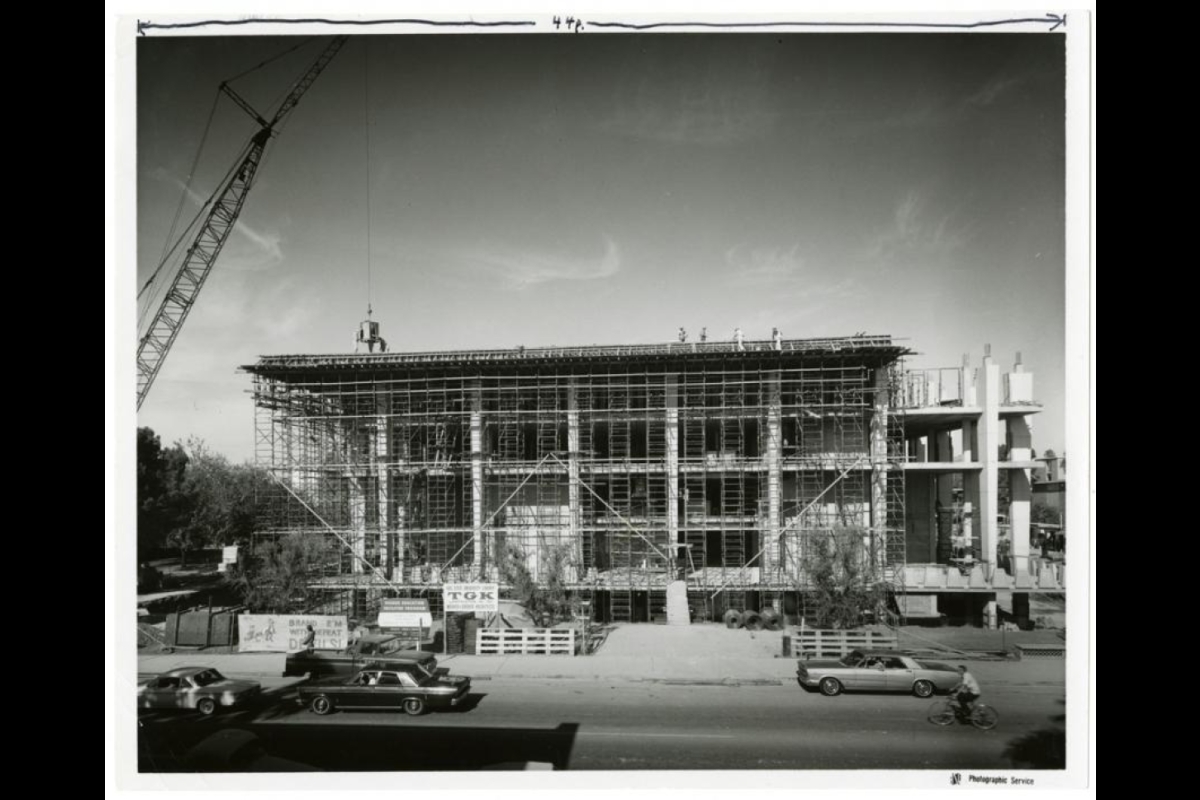50 years in, Hayden Library plans a remake
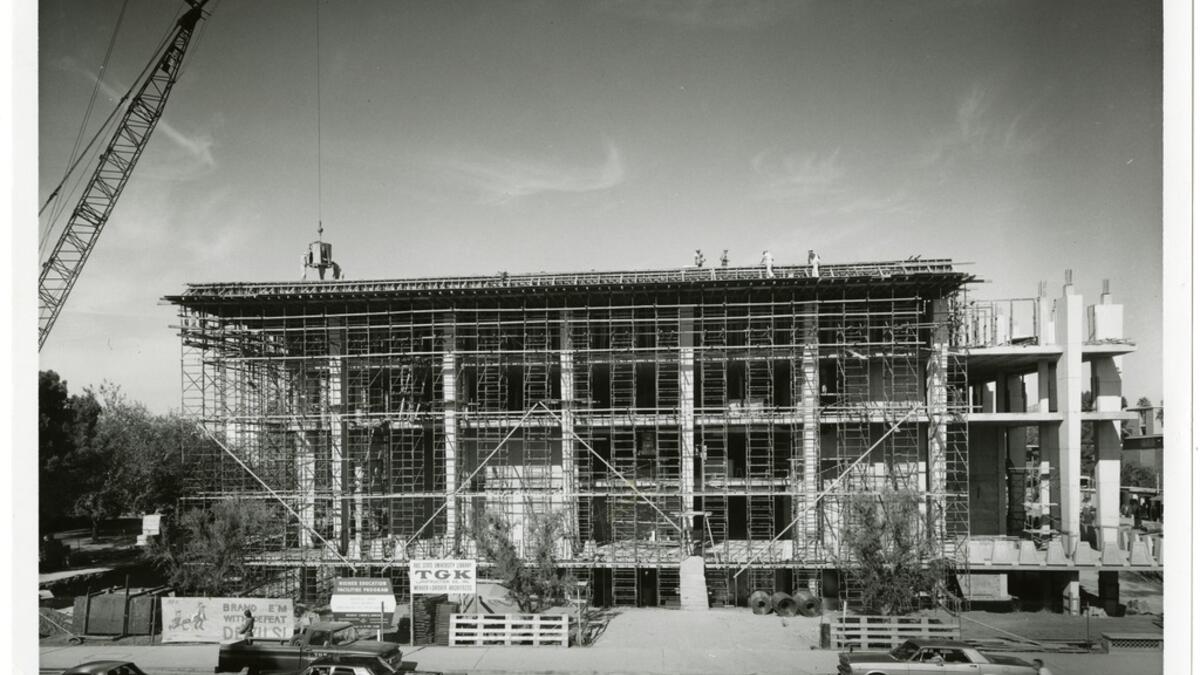
Construction of Hayden Library in 1965. University Archives.
Hayden Library, which sits at the center of ASU’s Tempe campus, is the most visited library facility at Arizona State University, receiving more than 1.5 million visitors each year.
Still, the space and resources at Hayden are severely underused, according to university librarian Jim O’Donnell.
“I tend to think of Hayden Library as a stealth museum, with its underground entrance and many of its extraordinary treasures tucked away, hidden from public view,” O’Donnell said.
Some of those hidden gems include an original illustrated version of “Alice in Wonderland” by Salvador Dalí, the earliest music ever recorded in Arizona (by a cowgirl musician named Billie Maxwell) and the collected papers of Native American writer and poet Simon Ortiz.
“Students come here all the time, but they aren’t aware of everything we’ve got, and so their relationship to the library becomes mostly digital,” O’Donnell said. “Even if we can’t live without digital, there’s more to life than what’s online.”
Reimagining Hayden
On the heels of its 50th anniversary, Hayden Library is preparing to undergo a major renovation, with construction expected to begin in late 2017, in an effort to make Hayden more accessible and engaging and its resources more visible and user-friendly.
Plans to remake Hayden are largely informed by O’Donnell’s vision of what a library of the future should be: “a place that is as inspiring as it is welcoming, both an incubator of creativity and a monument to human complexity.”
It’s a vision well suited to the mission and goals of the New American University, O’Donnell said, which prioritize access, knowledge discovery and community embeddedness.
“In making Hayden more distinctive and usable, more community-based, we are opening the door to greater opportunities for access, excellence and innovation,” O’Donnell said.
Plans to redesign Hayden include adding multiple points of access, with greater indoor-outdoor connection; dedicating space for community gatherings; breaking the library up into thematic neighborhoods to better facilitate navigation and research discovery; and removing 1 million books from Hayden’s shelves to maximize space for students to study, work and interact, as well as to spotlight exhibits and collections.
"A library should be a place that is as inspiring as it is welcoming, both an incubator of creativity and a monument to human complexity.”
– Jim O'Donnell, university librarian
While many books will remain at Hayden, those that leave will be permanently stationed at Noble Library or at the Polytechnic campus in a high-density storage facility, where they will be available for fast-turnaround delivery.
“We’re being strategic about our physical books. The ones that are housed in open facilities will be carefully chosen to inspire, challenge and support our best work,” said O’Donnell, “but all of our books will be readily available to all of our users, wherever they may be.”
(For more information about the removal of books, see Hayden Renovation FAQs).
While many books will remain on Hayden’s shelves, those that leave will be permanently stationed at Noble Library or at the Polytechnic campus, where they will be available for fast-turnaround delivery.
Further plans to complement the building renovation and modernize the library’s services include developing a network of makerspaces, in which students and faculty can create everything from podcasts to 3-D printouts, and cultivating partnerships university-wide that leverage and enhance the library’s unique collections and data research centers, such as the new Map and Geospatial Hub.
“When finished, the new Hayden will be a combination of traditional library and high-tech workspace,” O’Donnell said. “It will be a dazzling showcase for the university — a place where you can find, interact with and explore all the riches we have to offer.”
Building a library of the future
In 1966, when Hayden Library first opened, the “riches” could easily be contained in Hayden’s 205,000 square feet of space. At that time, Arizona State University was not yet a decade old — its student population somewhere around 20,000.
Today, the university’s libraries contain approximately 4.5 million volumes, and ASU’s student population is more than four times what it was in 1966, including a growing segment of online students who may never step foot in an ASU library during their college career.
“The library is everywhere now,” O’Donnell said. “Our mission as librarians is to meet students and faculty wherever they are and get them whatever they need, quickly and efficiently, with as few restrictions as possible.”
The Hayden renovation, expected to be complete in the fall of 2019, is part of a larger university-wide effort to transform ASU’s nine libraries as a whole into a cohesive service operation that will meet the knowledge needs of students, researchers and the community well into this century.
Significant changes will include the implementation of a newly integrated library system and updated service platform, a merging of technology and bibliographic units, the expansion of the ASU Digital Repository, and a new name: ASU Library. What’s available online and what’s available in ASU Library’s buildings will all add up to one library accessible to every ASU user.
“The name change is reflective of the work we are doing to better integrate and align our services for a more seamless customer service experience,” said Tomalee Doan, associate university librarian. “The new digital service platform we’re building will transform the ways in which we do business and operate as a library, in addition to how we connect users to information.
“We are taking a look through a different lens, looking at every tool and every service option possible. It’s a total transformation; we are really building a library of the future.”
Under this new library system, customers can expect more rapid service than before, with expedited and same-day delivery options available, similar to Amazon Prime. In addition, the new system will offer advanced digital tools for searching, browsing, sharing and customizing information and materials.
“Research and teaching excellence depends on stellar library resources and support,” said Devoney Looser, a professor in ASU’s Department of English and chair of the Library Liaison Committee. “These plans for bringing forward ASU Library promise to enhance and expand opportunities for faculty and student knowledge-building. What a fantastic thing for our community.”
As the digital library and the nature of e-books continue to evolve, O’Donnell says the goal is for ASU Library to be well positioned to harness them.
“It’s an exciting time for libraries that are beginning to find their foothold in the digital age,” O’Donnell said. “We’ve got so much to offer, and with today’s technologies and ASU’s resources, together, there is limitless potential for what we can do.”
For more information about the renovation, see Hayden Renovation FAQs.
More Sun Devil community

A champion's gift: Donation from former Sun Devil helps renovate softball stadium
Jackie Vasquez-Lapan can hear the words today as clearly as she did 17 years ago.In 2008, Vasquez-Lapan was an outfielder on…

Student-led business organization celebrates community, Indigenous heritage
ASU has seen significant growth in Native American student enrollment in recent years. And yet, Native American students make up…

Remembering ASU physical chemist Andrew Chizmeshya
Andrew Chizmeshya, a computational chemist and materials scientist whose work spanned over three decades at Arizona State…


